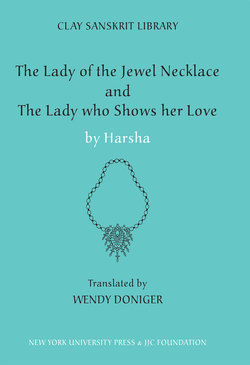Читать книгу The Lady of the Jewel Necklace & The Lady who Shows her Love - Harsha - Страница 45
На сайте Литреса книга снята с продажи.
ОглавлениеHere is a summary of just the beginning of Levi’s explication of Indian dramatic theory, using examples from ‘The Lady of the Jewel Necklace’ in all but a few cases. This summary will demonstrate not only how closely ‘The Lady of the Jewel Necklace’ (Ratnavali, here cited as R) either follows or inspires the categories of the Indian analysis, but how closely the plot is developed along traditional lines.
Levi begins, as the tradition begins, with the five elements, or moral situations, of the drama:
1.The enterprise: Yaugandharayana wants to conceal Ratnavali’s identity and introduce her as a lady-in-waiting in the harem. [R 1.27].
2.The effort: Sagarika: “As long as no one comes here, I’ll gaze at a painting of the man I love, and do what I want.” [R 2.13].
3.The possibility of success: The king finds Sagarika and says, “My friend, this comes like a bolt out of the blue.” Jester: “Yes indeed, unless Queen Vasava·datta comes to play the part of an untimely hurricane.” [R 3.137–138].
4.The certainty of success: The king to the jester: “My friend, I see no way of doing this but appeasing the queen.” [R 3.122].
5.Success: The king gets, from the hand of the queen, Ratnavali, who has been passing as Sagarika, and achieves by that marriage universal sovereignty [R 4.248 (verse 21)] (Sylvain Levi 1963: 32–4).
The theory then goes into far more detail, explaining the articulation of the limbs of the plot, starting with the 12 limbs of the beginning of the articulation of the action:________
